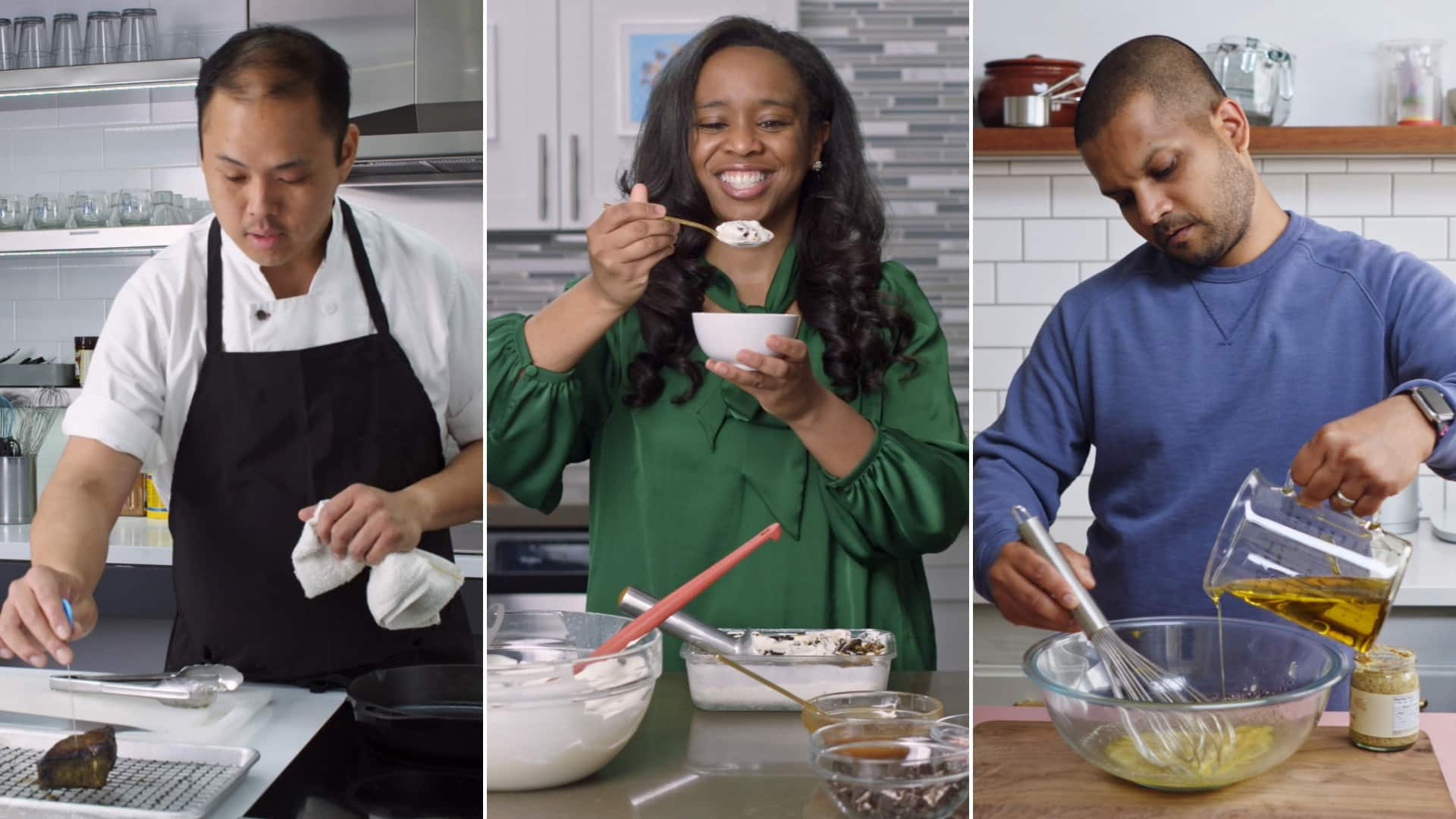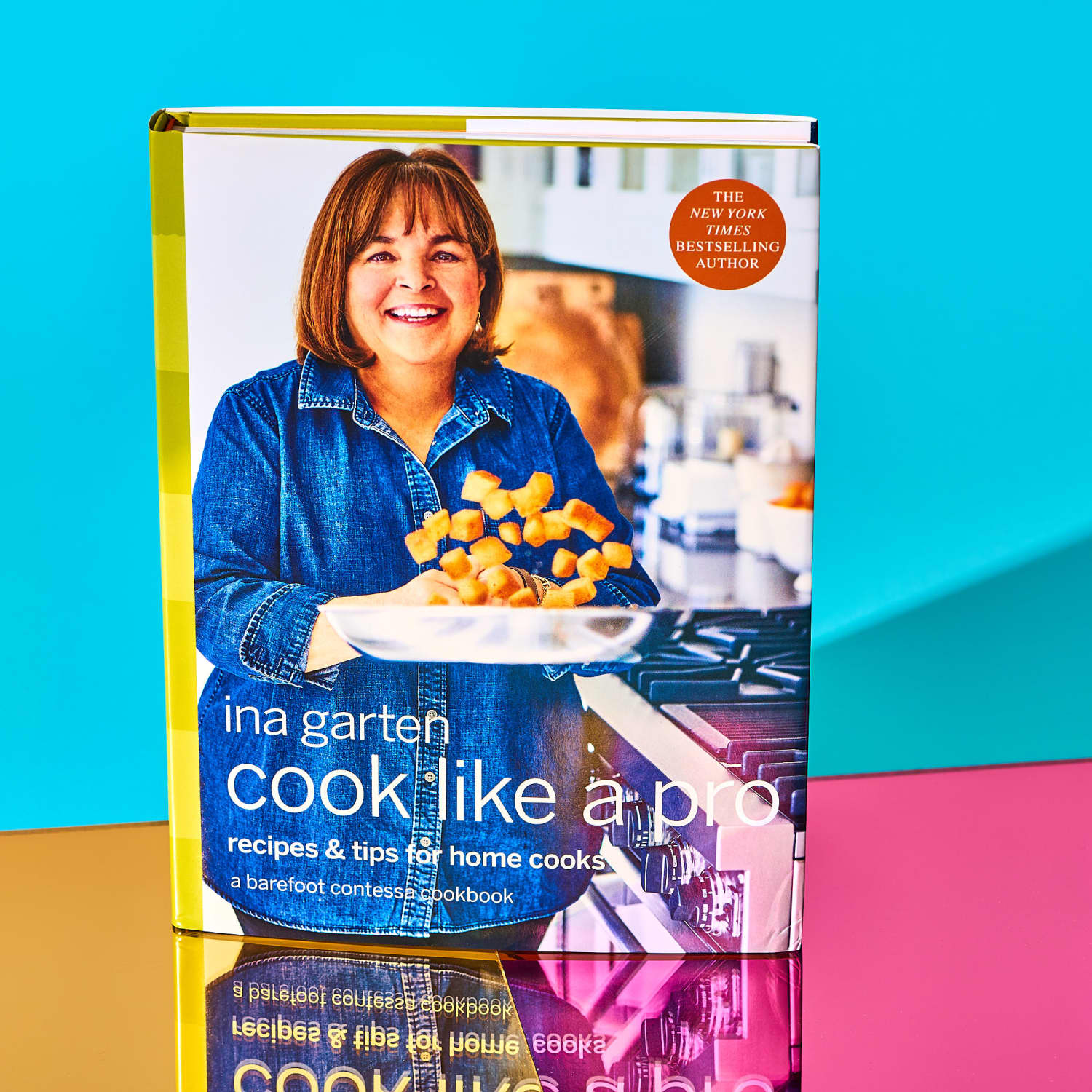
These cooking tips and tricks can help novices and experts alike make better food. Make sure you understand the order of ingredients before adding them to a dish. Different ingredients cook at different rates. You will also learn to use your senses when cooking. If you don't have the sense of smell, you can learn to use a thermometer for checking the temperature of food. And finally, don't be afraid to experiment with new flavors and textures.
Ten simple cooking techniques
If you enjoy trying new foods, learning how to cook can make your life more enjoyable. Learn basic cooking skills to make even the most simple dishes delicious and healthier. There are many ways you can cook chicken, salmon, black beans, and broccoli. The first step in the process is to beat eggs. Cooking eggs takes just five minutes! A great cooking trick is to blot the meat before you cook it. This will ensure that your meat is cooked evenly.
It is a good idea to defrost frozen ingredients before cooking. This will help prevent the ingredients from becoming brittle. Use frozen ingredients. Make sure they are stored in a close-by cupboard to keep them from getting too hot or steamy. This will preserve their taste. If you don't own a freezer, you may be able to defrost the items in your refrigerator.
Proper measuring cups
A set of measuring cup comes in many sizes. A set of six measuring cups includes one for each of the most common measurements. These cups are ideal for measuring dry ingredients like flour, but they can be cumbersome. A set of these cups will allow you to measure all liquids and spices accurately. Here are some helpful tips on how to buy measuring cups that you can use for cooking.

You should first buy a set that is both dry and liquid. They can be filled with dry ingredients, so you don't have to worry about them getting contaminated. However, it's best to avoid dipping your measuring cup into a bag of flour or another dry ingredient that will make the measurement inaccurate. This will lead to a poor measurement as liquid measuring cups can have an ambiguous measurement.
Storing food in a safe place
Knowing what you will be using is the first step to properly store food. Some foods won't spoil and can be stored in the fridge or pantry. Other items should be stored in glass containers. Non-perishables should be kept in glass jars. They should be kept in a cool, dark place away from direct sunlight. Below are some suggestions for how to properly store food in the fridge.
First, clean up your kitchen. Avoid storing food in close proximity to household products. Keep food cool and dark. You should ensure your containers are securely fitted so that no food gets thrown away. Keep your food safe from heat sources like pipes. Foods that are exposed to sunlight for too long can also change their color.
Cooking with your own senses
It can improve the cooking experience by using all your senses. For example, relying on your taste buds can help you choose the right ingredients for your recipes. If you can imagine what the flavors of a particular dish will taste like, you will have an easier time determining the cooking time. Your visual senses (including touch and smell) are also important. Listen to your gut when shopping for ingredients and use your imagination as a guide to what they taste like. If you feel that red cabbage would be a better substitute for broccoli, it might make for a delicious and unique dish.

By using your five senses, you'll find it easier to identify new foods, assess their quality, and enjoy them more. You will discover that there is a whole world beyond what you think. You can learn about the fascinating science of flavour and learn to use your senses to appreciate food as you cook. You will discover the difference between a fake and real emojipeach. Even rhubarb and grapefruit can be appreciated bitterly. If your kitchen is cluttered, you can use all your senses and look around to make sure that everything is in order.
FAQ
Is it possible to be self-taught?
Yes, you can self-teach cooking! Everyone loves cooking, regardless of whether they are skilled or not. Start cooking at home if you want to learn how to cook. Start small, like making pancakes for breakfast or spaghetti sauce for dinner. Try new recipes and be open to experimentation when learning how to cook. You might even make some mistakes.
The time it takes to learn to cook can vary from just a few hours up to several weeks, depending upon your skill level. Remember that cooking is not about following recipes. There are many methods to prepare food.
Where can I find high-quality kitchen equipment?
You can buy high-quality kitchen gear online. Many websites offer all types of kitchen equipment for purchase. Be sure to read customer reviews before you buy any kitchen equipment. Ask other owners if they have any recommendations.
What are my options for learning about cooking?
All over the country, cooking classes are offered. Many schools offer courses in baking, pastry, and wine tasting. You can take a class at your local vocational school or community college if you are interested in learning more about cooking.
What is the best way to learn to cook?
Cooking is one of those things that everyone should know how to do. You'll miss out on delicious meals if your skills are not up to par. First, find a recipe that appeals to you and then follow it closely. You'll then want to practice small adjustments until you feel confident making the dish. You can also try cooking for other people. This will help you improve at cooking and also allow you to test your skills.
What should a beginner cook start with?
Start cooking something simple, such as pasta, rice, soup. A recipe book or a YouTube video can help you learn how to cook. Cooking with others is more enjoyable. Enjoy cooking with your family, friends, or both.
Statistics
- You'll be amazed that over 90% of CIA students receive scholarships and grants to finish their culinary studies. (ischoolconnect.com)
- According to the BLS, chefs earn $58,740 a year. (learnhowtobecome.org)
- In the United States, the category is estimated at $23.2 billion annually and is growing faster than the market. (washingtonpost.com)
External Links
How To
How to make the perfect omelet
Omelets are one of my favorite foods to eat at breakfast. But how do they turn out so perfectly? There are many recipes and methods I tried, but none worked. Today, I'd like to share some tips with you in order to make delicious and fluffy omelets every day.
When making omelets, it is important to be aware that eggs can be temperamental. They must be fresh, preferably from the organic market, and be kept cold until cooking. If they are not kept cold enough, the whites won’t form properly. The yolks will also break down too quickly and become runny. This makes your omelets look weirdly colored. If you plan to cook the eggs right away, it is best to use room temperature eggs.
You can also separate the egg before you add it to the pan. It is important not to allow any white to mix with the yolk as this could lead to the omelet becoming curdled.
You could end up burning the bottom half of the egg if the egg is added directly to the heat source. Instead, place the egg in the microwave for 10 second before you put it in the skillet. The microwave heat cooks your egg just right, without it becoming too soft.
Next, let's discuss mixing the eggs. When mixing eggs, it is important to thoroughly beat them. To do this, take the bowl from the mixer and flip it upside-down. Next, shake the bowl vigorously. This will whip the air around the bowl and mix the egg well.
The fun part is now - adding the milk to the mixture. Mix half of the milk with the eggs. Then fold the eggs in half into the remaining milk. You don't need to worry if streaks remain. They will disappear once you flip your omelet.
After folding the eggs, place the pan on medium heat and wait for the oil to start sizzling. Once the oil has gotten hot, add 1/4 cup of butter and swirl it around so that the entire pan is coated. Next, carefully open the lid and sprinkle salt into your pan. The salt will help to prevent the omelet's sticking to the pan.
Once the omelet has formed completely, cover the pan and let it set for a few minutes. Use a spatula to flip the omelet or turn the pan upside-down. Cook the opposite side for another minute. Remove the omelet from the pan and serve immediately.
This recipe works best when you use whole milk.